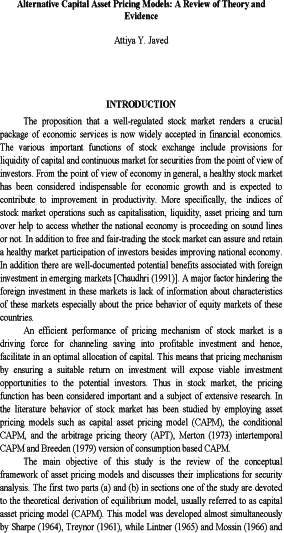
Pakistan Institute of Development Economics
- Home
Our Portals
MenuMenuMenuMenuMenuMenuMenu - ResearchMenuMenuMenuMenuMenuMenuMenu
- Discourse
- The PDR
- Our Researchers
- Academics
- Degree Verification
- Thesis Portal
- Our Portals
Alternative Capital Asset Pricing Models: A Review of Theory and Evidence
The proposition that a well-regulated stock market renders a crucial package of economic services is now widely accepted in financial economics. The various important functions of stock exchange include provisions for liquidity of capital and continuous market for securities from the point of view of investors. From the point of view of economy in general, a healthy stock market has been considered indispensable for economic growth and is expected to contribute to improvement in productivity. More specifically, the indices of stock market operations such as capitalisation, liquidity, asset pricing and turn over help to access whether the national economy is proceeding on sound lines or not. In addition to free and fair-trading the stock market can assure and retain a healthy market participation of investors besides improving national economy. In addition there are well-documented potential benefits associated with foreign investment in emerging markets [Chaudhri (1991)]. A major factor hindering the foreign investment in these markets is lack of information about characteristics of these markets especially about the price behavior of equity markets of these countries.



